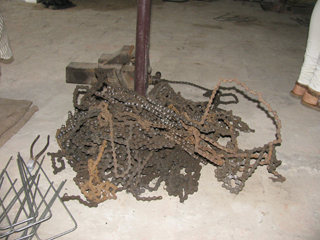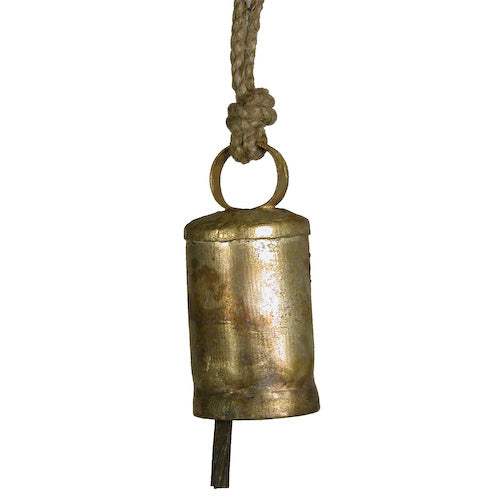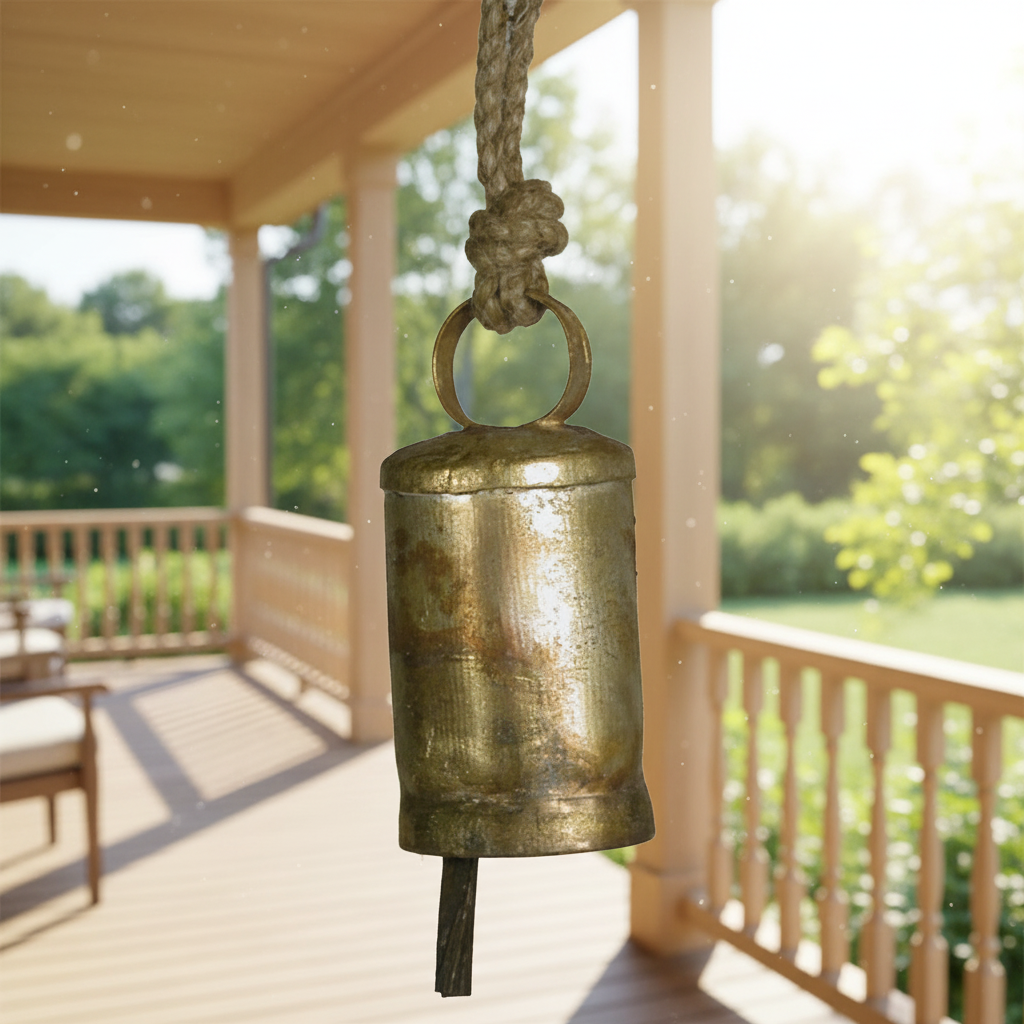OWP
Campana de metal cilíndrica pequeña hecha a mano
Campana de metal cilíndrica pequeña hecha a mano
No se pudo cargar la disponibilidad de retiro
Instrumento musical y acento decorativo en uno, esta campana de forma cilíndrica ha sido hecha a mano con chatarra reciclada por los artesanos del taller patrocinado por el Arca de Noé en Moradabad, India.
- Mide 2-1/4" de alto con un diámetro de 1-1/2"
Hecho a mano en la India y importado de comercio justo.
Originarias de las ciudades de Kutch y Gujarat, en la India occidental, estas campanas de metal se fabricaban tradicionalmente para el ganado, con diferentes tamaños y tonos para ayudar a los pastores a identificar a sus animales. Los artesanos, descendientes de la casta Lohar, originaria de Pakistán, han estado fabricando campanas desde que tienen ascendencia. Hoy en día, las campanas se fabrican con restos de hierro recuperados de depósitos de chatarra y luego se prensan a mano en una variedad de formas y tamaños, tal como lo han hecho durante los últimos 1000 años.
Después de lograr su forma, las campanas se cubren con cobre en polvo y pasta de barro y luego se cuecen en un horno para obtener un acabado rústico. Todo el proceso genera una mínima cantidad de residuos, apenas pequeños restos de chatarra y barro quemado, y al no estar soldados, una cantidad muy pequeña de energía.
Lea nuestra descripción ampliada a continuación haciendo clic en "Acerca de los artesanos" para obtener más información sobre cómo se fabrican estas hermosas joyas y para obtener más información sobre los artistas que las hacen.
Share
About the Artisans
About the Artisans
Kamrool Hassan es un artesano del metal de Moradabad, ciudad situada al norte de la India. Ha estado asociado con el Arca de Noé durante más de 15 años. Perteneciente a una familia tradicional de trabajadores del metal, Kamrool comenzó su carrera profesional fabricando puertas, barandillas y rejas de ventanas metálicas para hogares. Durante generaciones, sus antepasados pertenecieron a la comunidad de herreros y se sabía que fabricaban utensilios de latón y cobre para las familias reales mogoles. Moradabad es el centro metalúrgico del país y es conocido por su producción de artefactos de latón y metal. Noah's Ark trabaja con varios artesanos en Moradabad y sus alrededores, que producen productos únicos que atienden a los mercados nacionales e internacionales.

Kamrool tiene un pequeño taller que proporciona ingresos sostenibles a otros cinco artesanos; cada uno participa en el proceso de clasificar, romper y soldar las cadenas. El Arca de Noé ayudó a Kamrool a montar un taller para su trabajo en metal. El taller cuenta con la mayoría de las comodidades necesarias excepto el acabado final, que se realiza en otras instalaciones. Kamrool y su grupo de artesanos son expertos en hacer hermosos marcos de cuadros, portavelas, cuencos y otros accesorios con cadenas de bicicletas desechadas. Esta colección es única y da un nuevo significado a la chatarra desechada.
Los artesanos necesitan un suministro sostenible de cadenas de bicicletas desechadas para producir su trabajo; Por lo general, estos provienen del mercado local de chatarra. En momentos en que los pedidos son grandes, necesitan comprar cadenas recicladas en otras ciudades, como Delhi. Una vez adquiridas las cadenas metálicas, se clasifican por tamaño y se enderezan. Luego se seccionan según el tamaño o largo requerido para un producto en particular. Las secciones de la cadena se colocan sobre un marco de metal o un tinte, para asegurar la coherencia en la forma y el tamaño de cada producto, y se sueldan entre sí. Una vez que se les da forma a los productos, están listos para un acabado final; Se limpia el metal y se elimina el óxido y otras impurezas. A continuación, el artículo se pule o se aplica un recubrimiento en polvo según sea necesario. Finalmente, los productos de la cadena reciclados están listos para ser enviados al almacén para su embalaje y envío.




